In April 2021, Apple updated its popular iPad Pro lineup, introducing a faster M1 chip, a Liquid Retina XDR display, a Thunderbolt port, and more, replacing the previous models from March 2020.
Although the 2020 and 2021 iPad Pro models have now been discontinued by Apple, it is not unusual to find them available at discounted prices with third-party retailers. Some other users who already have the 2020 iPad Pro may also be considering if it is worth the upgrade to the 2021 model.
Should you consider sticking with or purchasing the older iPad Pro to save money, or do you need the latest model? Our guide answers the question of how to decide which of these two iPad Pros is best for you.
Similarities
Being only a year apart, the 2020 iPad Pro has more in common with its 2021 successor than it has in contrast, including key features such as the design and rear camera setup.
- Industrial design with flat edges
- Face ID enabled by TrueDepth camera
- Liquid Retina display with 264 ppi, full lamination, oleophobic and anti-reflective coating, P3 Wide Color, and True Tone
- ƒ/1.8 12MP Wide and ƒ/2.4 12MP Ultra Wide rear cameras with LiDAR scanner
- 2x optical zoom out, 5x digital zoom in, brighter True Tone flash, and Smart HDR 3 for photos
- 4K video recording at 24 fps, 25 fps, 30 fps, or 60 fps, 1080p HD video recording at 25 fps, 30 fps, or 60 fps, slo-mo video support for 1080p at 120 fps or 240 fps, time-lapse video with stabilization, and audio zoom
- TrueDepth front-facing camera with Retina Flash, Portrait mode, Portrait Lighting, Cinematic video stabilization, 1080p HD video recording at 25 fps, 30 fps, or 60 fps, Animoji, and Memoji
- Stereo recording with "studio quality" mics
- Four speaker audio
- "All-day" 10 hour battery life
- Wi‑Fi 6 and Bluetooth 5.0 connectivity
- USB‑C connector
- Compatible with Magic Keyboard, Smart Keyboard Folio, and Apple Pencil (2nd generation)
- Available in Silver and Space Gray
Apple's specification breakdown shows that the two iPad Pros share an overwhelming majority of features. Even so, there a number of meaningful differences between the 2020 and 2021 iPad Pros that are worth highlighting, including their display technologies, processors, and front-facing cameras.
Differences
2020 iPad Pro
- Liquid Retina LED display with 600 nits max brightness (typical)
- A12Z chip
- Neural Engine
- 6GB RAM
- Storage configurations up to 1TB
- ƒ/2.2 7MP TrueDepth camera
- Smart HDR for photos
- USB-C
- 5.9mm thickness
- 1.04 pounds / 1.41 pounds
2021 iPad Pro
- Liquid Retina XDR mini-LED display with 1,000 nits max full-screen brightness. 1,600 nits peak brightness, and HDR (12.9-inch model only)
- M1 chip
- Next-generation Neural Engine
- 8GB or 16GB RAM
- Storage configurations up to 2TB
- ƒ/2.4 12MP TrueDepth camera with Ultra Wide camera, 2x optical zoom out, and Center Stage
- Smart HDR 3 for photos
- Extended dynamic range for video up to 30 fps
- Thunderbolt / USB 4 port
- 6.4mm thickness (12.9-inch model only)
- 1.03 pounds / 1.5 pounds
Read on for a closer look at each of these aspects, and see what exactly both iPad Pro generations have to offer.
Display Technology
The 12.9-inch 2020 iPad Pro, as well as the two generations of the 11-inch models, have the exact same Liquid Retina LED display, featuring 120Hz ProMotion, full lamination, an anti-reflective coating, P3 wide color, and True Tone.

2021's 12.9-inch iPad Pro has an entirely new Liquid Retina XDR mini-LED display. In addition to the display features of the other iPad Pros, the Liquid Retina XDR display uses over 10,000 LEDs across the back of the display to deliver 1,000 nits of full-screen brightness, 1,600 nits of peak brightness, and a 1 million-to-1 contrast ratio. The result is an improved visual experience that captures the brightest highlights and subtle details in even the darkest images.

Now creative professionals, including photographers, videographers, and filmmakers, can view and edit true-to-life HDR content on the iPad Pro. There is also an enhanced cinematic viewing experience for HDR and Dolby Vision content.
If you can take advantage of the new display by consuming or creating HDR media, the 12.9-inch iPad Pro presents a clear upgrade over the 2020 model. If you're looking at the 11-inch size, the identical displays mean this won't be a factor in your decision.
A12Z vs. M1 Chip
The two generations vary considerably when it comes to chips. The 2020 iPad Pro models contain the A12Z chip, which is an iteration of the previous A12X chip from the 2018 iPad Pro, which itself was a variant of the A12 chip from the iPhone XS. The 2021 iPad Pro contains the M1 chip from Apple's latest MacBook Air, MacBook Pro, Mac mini, and iMac.
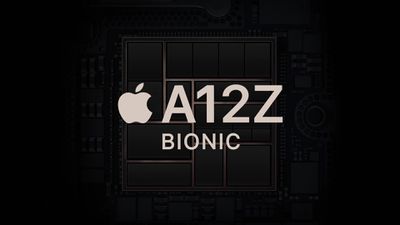
Both the A12Z and the M1 chip have eight cores, four of which are high-performance cores and four of which are high-efficiency cores. Both processors can leverage all eight cores for the GPU.
The A12Z is built on a 7-nanometer manufacturing process, while the M1 is made using a newer 5-nanometer process. The A12Z features a maximum clock speed of 2.49GHz, and the M1 chip has a much higher clock speed of 3.2GHz.
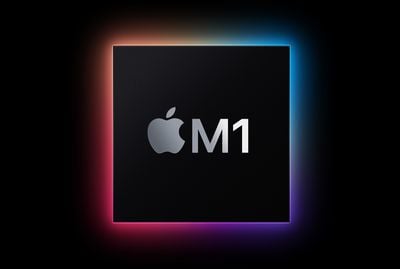
Benchmarks for the M1 chip in the iPad Pro show that it is much more powerful than the A12Z, with similar scores to the MacBook Air, which is also a passively cooled mobile device with the M1 chip. The M1 in the MacBook Air achieves a Geekbench single-core score of 1700, while the iPad Pro with the A12Z achieves 1121. In multi-core, the MacBook Air has a score of 7374, while the A12Z in the iPad Pro has a score of 4655.
The M1 chip shows a clear performance improvement over the A12Z, but it will likely not be noticeable in most tasks. The A12Z was already a powerful and capable chip, and it is difficult to recommend the 2021 model over the 2020 model simply on the basis of processor unless you can definitely use the additional performance.
Memory
The A12Z processor in the 2020 iPad Pro is paired with 6GB of RAM. The 2021 iPad Pro has either 8GB or 16GB, just like Macs with the M1 chip. iPad Pro configurations with either 1TB or 2TB of storage contain 16GB of RAM, while all other storage configurations contain 8GB of RAM.
6GB in the 2020 iPad Pro will be adequate for casual users, but 8GB will be defter at handling multiple windows of the same application and a range of intense background tasks.
Ultimately, iPadOS is excellent at memory management, so it is unlikely that the amount of RAM in your iPad will be important in most cases.
Storage
Both iPad Pro models are available with 128GB, 256GB, 512GB, or 1TB of storage. The 2021 iPad Pro adds a new 2TB storage option for an extra $400 over the 1TB configuration.
The maximum 1TB of storage in the 2020 iPad Pro will be more than enough for most users, but for power users who intend to store a very large amount of data on their iPads, the option is available with the 2021 iPad Pro.
Camera
Both iPad Pro models feature the exact same rear camera setup in terms of hardware. Even so, the 2021 model adds Smart HDR 3 and extended dynamic range for video up to 30 fps.
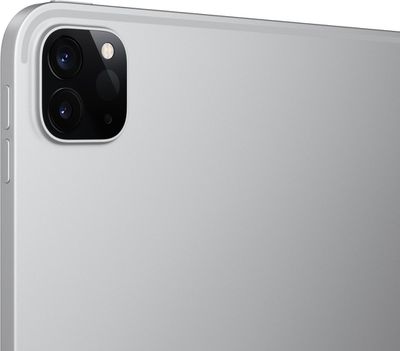
Bigger camera differences emerge on the front of the iPad Pro. The 2020 iPad Pro features a ƒ/2.2 7MP TrueDepth front-facing camera, while the 2021 model features a ƒ/2.4 12MP TrueDepth camera with Ultra Wide camera.
The improved specifications of the 2021 model's camera facilitate a 2x optical zoom out and Center Stage for video calls.

Center Stage uses the much larger field of view on the new front camera and the machine learning capabilities of the M1 chip to recognize and keep users centered in the frame. As users move around, Center Stage automatically pans to keep them in the shot. When others join in, the camera detects them too, and smoothly zooms out to fit everyone into the view.
Cellular Connectivity
The 2020 iPad Pro models feature connectivity to standard 4G LTE in cellular configurations. The 2021 iPad Pros, on the other hand, are the first to feature 5G connectivity, allowing the iPad Pro to reach speeds up to 4Gbps.
5G is considerably faster than 4G, but it will only be worth it for users with the cellular iPad Pro configurations and a corresponding plan from a carrier.
Ports
The 2020 iPad Pro features a standard USB-C port, while the iPad Pro features a Thunderbolt port. USB-C on the iPad Air can transfer at a speed of 10Gb/s, while Thunderbolt supports speeds of up to 40Gb/s. As well as being considerably faster, Thunderbolt opens up the potential for compatibility with a much broader range of Thunderbolt-only accessories such as external hard drives and monitors. Thunderbolt also is backward-compatible with USB-C, so the two ports look identical.
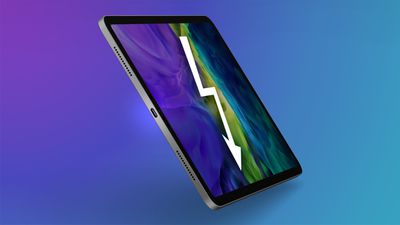
Even though Thunderbolt is much faster than the 2020 iPad Pro's standard USB-C port, most users likely will not have Thunderbolt accessories that can take advantage of these speeds, so for most users, the 2021 model will not be worth it for Thunderbolt alone.
Accessories
Both iPad Pro models support accessories such as the Apple Pencil 2, as well as Apple's Smart Keyboard Folio and Magic Keyboard. Since they both support the same accessories, there is no reason to buy one model over the other when it comes to the likes of keyboards or trackpads.
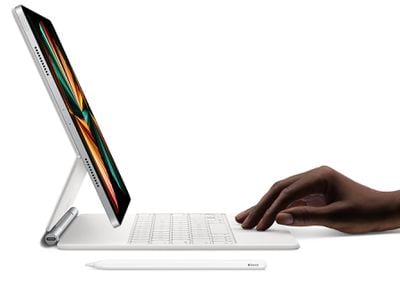
Nevertheless, it should be considered that accessories such as the Apple Pencil and Magic Keyboard have to be purchased separately from the iPad, so will push up the overall price. Therefore, if the 2021 iPad Pro, which starts at $799, is already moving out of your price range and you want an accessory such as the $299 Magic Keyboard, you may need to opt for the older iPad Pro to bring down the overall cost.
For 2020 12.9-inch iPad Pro users who use the Magic Keyboard and are looking to upgrade to the newer model, it should be noted that since the 2021 model is slightly thicker, you may want to purchase a new Magic Keyboard too for a better fit. Although the 2020 Magic Keyboard fits the 2021 12.9-inch model, Apple notes that it is only "functionally compatible" and may not fit precisely due to the added thickness.
Other iPad Options
If the iPad Pro is too expensive or you feel you will not be able to take advantage, you may wish to consider the iPad Air, which starts at $599. The iPad Air offers a large number of features shared with the iPad Pro, such as the latest all-screen design, a fast, capable processor, practical features like USB-C, and compatibility with the latest Apple accessories, all at a lower price point.
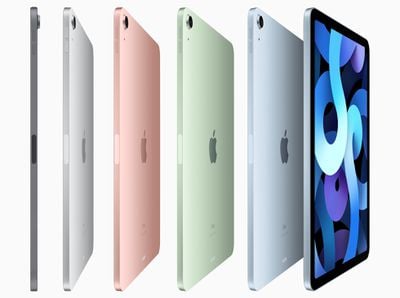
Unless you need iPad Pro features such as a more advanced camera setup, Face ID, more RAM, or stereo audio recording, the iPad Air is the best option for the average consumer. For more on whether you should buy the iPad Air or the iPad Pro, see our iPad Air 2020 vs. iPad Pro 2021 Buyer's Guide.
Final Thoughts
Overall, the upgraded features of the 2021 iPad Pro models are significant but very specific. It will only be worth getting the 2021 model over its predecessor or upgrading to it from the 2020 model if you have a clear use case for features like Thunderbolt, more RAM or storage, or a better front-facing camera.
The M1 chip shows a distinct performance bump over the A12Z, but most users will likely not have workflows that can take advantage of the added power. The 2021 12.9-inch iPad Pro's mini-LED display is a notable upgrade from the previous model, and will be a game changer for consumers or creators of HDR media, but for 11-inch iPad Pro users in particular, there is little point in upgrading.
5G connectivity is the only other reason that it may be worth buying the 2021 iPad Pro, but again only a minority of users who choose the cellular configuration will likely be able to take advantage of it.
Nevertheless, the M1 chip and larger amounts of memory will make the 2021 iPad Pro more future-proof. If you are intending to keep your iPad Pro for more than a few years, it may be worth buying the newer model to ensure better performance over time through successive updates and with more demanding apps.
For the latest pricing on 2020 and 2021 models, check out the iPad Pro section of our Apple Deals roundup.




















Top Rated Comments
For those still in impulse buy mode, wait a little bit more and you might think differently.
Plenty of people have put their MacBooks down in lieu of iPads, especially recently.
This new model will only increase the amount of folks who do so, even if it's not everyone who switches.
All that said, it is not Apple's intent to replace a Mac with an iPad. They have different strengths, even if they overlap in several areas.